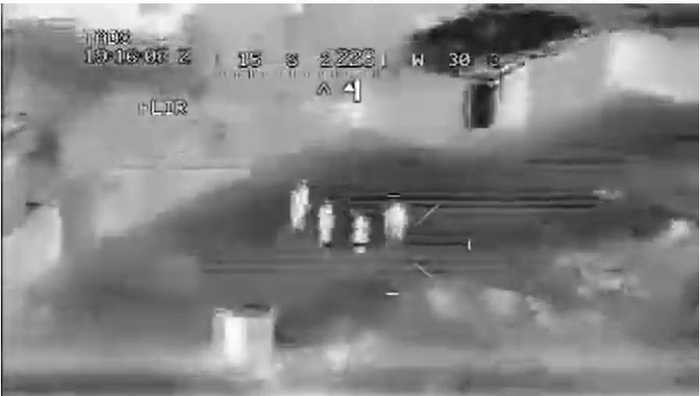Published 13:43 IST, March 26th 2024
It is a known fact that ever since Pakistan became an independent nation, it has remained at the cusp of myriad troubles.
Advertisement
Islamabad – On Monday, Pakistan's second-largest naval air station, PNS Siddique in Turbat, underwent a heavy attack, which was marked by intense gunfire and multiple explosions. According to The Balochistan Post, the Majeed Brigade of the proscribed Balochistan Liberation Army (BLA) has claimed responsibility for the attack on the Naval Airbase, which is known for its strategic importance to Pakistan.
In the incident that commenced at 10:30 pm (local time) on Monday, the security sources noted that the 4-5 BLA Terrorists armed with automatic weapons and hand grenades attacked, which eventually led to an intense fire exchange with the security personnel present at the outer wall of the station. In light of this, the District Health Officer of Kech has declared an emergency at the Teaching Hospital in Turbat, The Baloch Post reported. All medical staff were ordered to report to the hospital immediately to take care of the anticipated casualties from the assault.
Advertisement
It is pertinent to note that the Majeed Brigade is opposed to China’s investments in the province of Balochistan and has accused China and Pakistan of exploiting the region's vital resources. What makes the Turbat Naval Airbase so important is the fact it stations Chinese drones. “We have entered the Pakistani Naval Airbase in Turbat," the BLA Majeed Brigade said in an email to The Baloch Post.

Who are the Majeed Brigade?
According to the Jamestown Foundation, the group was named after two brothers, Majeed Langove Senior and Majeed Langove Junior, who were responsible for carrying out suicide attacks in August 1974 and March 2010, respectively. In the past Majeed Senior has attempted to assassinate the former Pakistani Prime Zulfiqar Ali Bhutto while he was on an official visit to Quetta. He wanted to kill the erstwhile premier after Bhutto dismissed the National Awami Party’s government in Balochistan. Meanwhile, Majeed Junior sacrificed himself to save his associates when Pakistani security forces raided the house where they were staying in Quetta’s Wahdat Colony.
Advertisement

Following Majeed Junior’s killing, BLA’s now-late leader, Aslam Achu, established the insurgent group’s suicide squad and labelled it as the Majeed Brigade. The group carried out its first vehicle-borne suicide attack in December 2011, when a man named Baaz Khan Marri targeted Shafeeq Mengal, the son of former Pakistani federal minister Naseer Mengal, on Quetta’s Arbab Road. However, in the span of a few years, the Majeed Brigade went into dormancy due to a lack of funds and recruits. It eventually took the group seven years to carry out its second suicide attack when a bus carrying Chinese engineers was targeted in Dalbadin in August 2018, Dawn reported.
The root cause of the Baloch issues
It is a known fact that ever since Pakistan became an independent nation, it has remained at the cusp of myriad troubles. Amid all this, the Pakistan-administered region of Balochistan has witnessed significant mayhem over the years. Two major points of reflection can appear in this context:
Advertisement
- The rise of violence and Baloch insurgency
- Local resentments
The region’s deteriorating security situation
Within forty-eight hours of the abrogation of the five-month-long ceasefire between the Tehreek-e-Taliban Pakistan (TTP) and the Pakistan Government, there was a suicide bombing in Balochistan’s capital, Quetta. The attack indicated how the region has become one of the major targets for the radical groups. However, the region has been accustomed to violence due to the increasing belligerence of the Baloch Liberation Army (BLA) as well as the Baloch Liberation Front (BLF). The ongoing station in Balochistan is the largest phase of insurgency South Asia has witnessed in its recent history.
The BLA was formed in 2000 and has conducted several violent attacks since the mid-2000s. The group has been fighting against the Pakistani administration for a better share of resources and self-autonomy – sometimes they have also advocated for the separation or independence from Pakistan. Due to its violent activities, the group has been marked as a terror organisation by the governments of Pakistan, the United States and the United Kingdom.
Advertisement

The BLF, on the other hand, has been active and coalescing with the BLA to fight against the Pakistani government. The extremist group is a much older organisation which was formed in 1964. The main objective of the body was to fight for the independence of Balochistan and was at the forefront of the Baloch insurgent movement in the 1970s. The group re-emerged in the mid-2000s, determined to fight for the Baloch cause. Together, along with factions of BLA and the Baloch Republican Guard, they formed the Baloch Raaji Aajoi Sangar (BRAS) in 2018. The growing prominence of these groups has led to the rise of terror activities. According to the Global Terrorism Index, 233 deaths were recorded as a consequence of BLA terror activities in 2022, a nine-fold increase since 2021.
The plight of Baloch People
One of the core issues of the Baloch movement has been the alienation of the local Baloch population at the hands of federal governments. The territory was said to have been annexed by Pakistan in 1948 when the Khan of Kalat was pressured to sign the accession agreement. Since then, the Balochis have continued more power over themselves ranging from greater autonomy to complete separation from Pakistan. While Balochistan is the largest of the four provinces in Pakistan, due to its sparse population, the administrative unit accounts for only 17 seats in the National Assembly.
Advertisement
-1711429231821.webp)
What makes the region so crucial is its rich resources such as gas, and is strategically crucial for Islamabad. In light of this, the people of Balochistan have often claimed that the Pakistani administration is exploiting the region's resources, but they are refusing to give any benefits to the locals. As a result of this, the administrative unit has a reason for the ‘all-weathered friendship between China and Pakistan.
-1711429292509.webp)
In 2022, the Haq do Tehreek (HDT) movement led to a massive 50-day sit-in protest at the port and international airport at Gwadar. Most of the people in the region were trying to protect the fishing rights of the Baloch people, decreasing checkpoints in the city, putting an end to deep-sea illegal trawling and facilitating better trade at the Pakistan-Iran border. A similar uprising took place in 2023 when Balochistan’s Finance Minister, Zmarak Achakzai threatened the then-Pak regime that the region would cut off supply from the Sui gas field in the province. The Sui gas field was touted as an important source of gas for the country. In the same year, Turbat marches took over the country with people demanding more rights and autonomy in the region. Hence, the resentment among the Balochis towards the Pakistani regime became one of the reasons for the turbulence.
10:39 IST, March 26th 2024